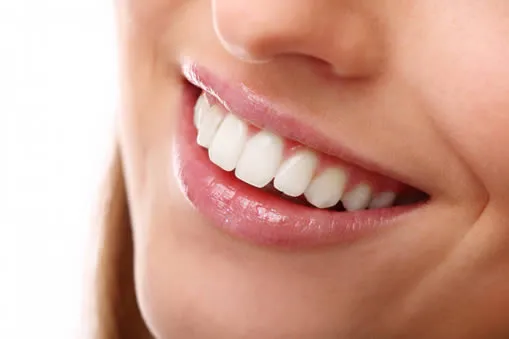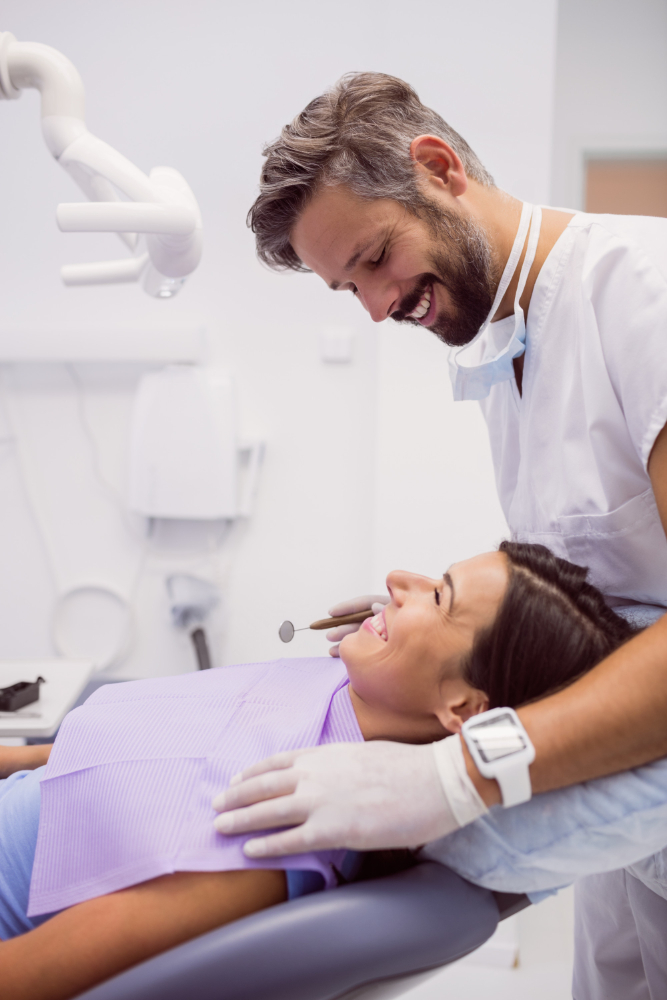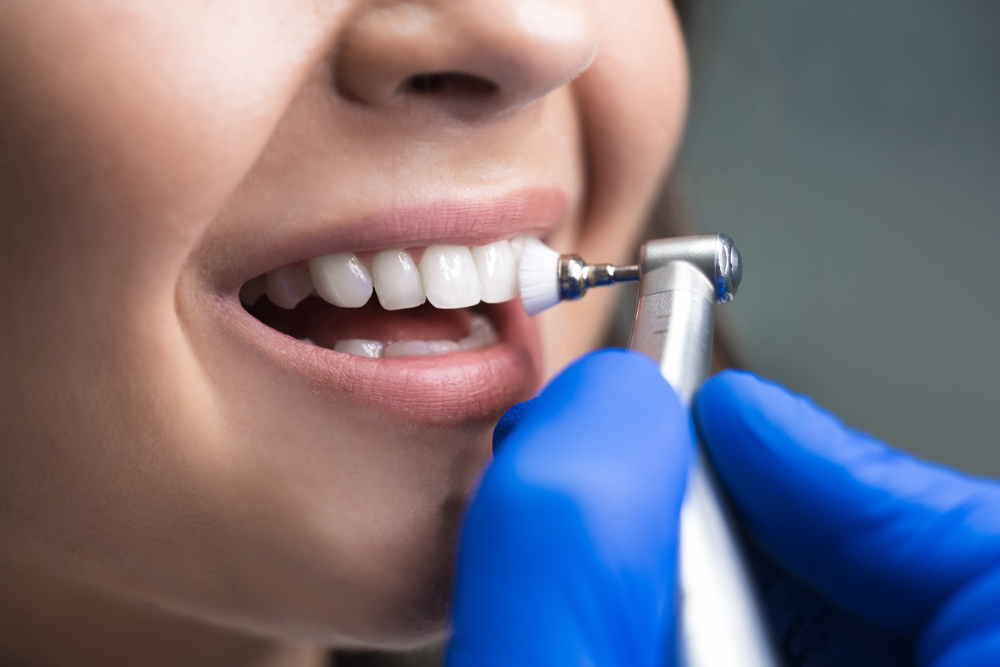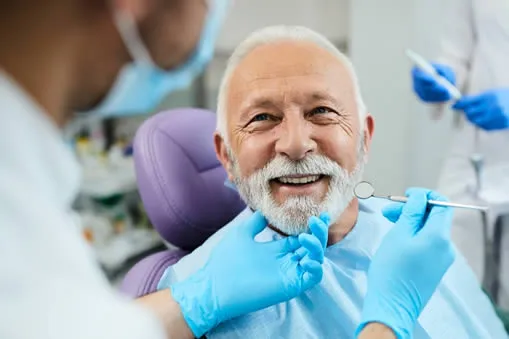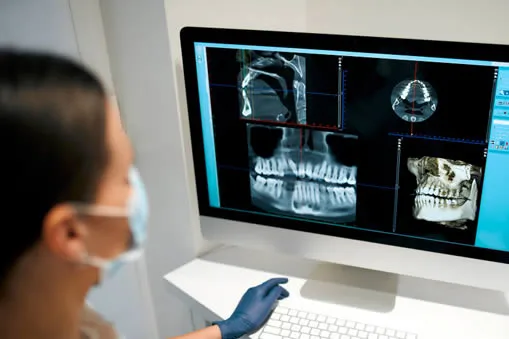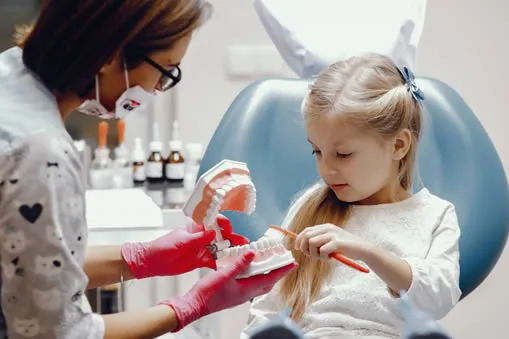
Preventative Dentistry for Children
As parents, we all want our children to have healthy, happy smiles that last a lifetime. That’s why preventative dentistry for kids is so important. By taking steps to prevent dental problems before they start, we can help ensure our children’s teeth stay strong and healthy as they grow. From regular check-ups and cleanings to fluoride treatments and dental sealants, preventative dentistry offers a range of effective strategies to keep kids’ smiles looking and feeling their best. So why wait? Start your child on the path to lifelong oral health today with our preventative dentistry services at our Lawrence, MA dental office.

What is preventative dentistry for children?
Preventative dentistry in children is the practice of taking proactive measures to prevent oral health problems before they occur. Your dentist will educate you and your child on proper oral hygiene techniques, including brushing twice a day with fluoride toothpaste and flossing daily. They can also monitor your child’s dental development and recommend orthodontic treatment if necessary.
During regular dental check-ups, your dentist can provide preventive treatments such as the application of fluoride and sealants to help prevent tooth decay. They can also identify any potential dental issues early on and provide appropriate treatment before they become more serious.
At our dental office we can also provide advice on sports safety and the use of mouthguards to prevent dental injuries. They may also offer dietary recommendations to help your child maintain good oral health.
By emphasizing preventative dentistry for children, your dentist can help ensure that your child develops healthy oral habits, prevent future dental problems, and maintain healthy teeth and gums for life.
What to expect at a child’s dental cleaning
Expect x-rays
A pediatric dental cleaning is a comprehensive appointment that includes various preventive treatments to maintain a child’s oral health. Along with cleaning the teeth and gums, the dental hygienist may also take x-rays to identify any underlying dental issues that may not be visible during a physical examination.
Expect a thorough cleaning
The dental hygienist will use a specialized instrument called a scaler to scrape plaque or tartar buildup from the teeth and gums. Next, they will use an ultrasonic dental tool to clean all sides of the teeth. Finally, the dental hygienist will polish the teeth using a rotary brush and a polishing paste to remove any surface stains and make the teeth feel smooth.
Expect fluoride and sealants
The application of fluoride and sealants is another essential part of the preventive treatment. Fluoride is a mineral that helps strengthen the teeth and protect against decay. The dental hygienist may apply fluoride in the form of a gel, foam, or varnish. Sealants, on the other hand, are thin, protective coatings that are applied to the chewing surfaces of the molars to prevent decay.
Expect guidance on oral hygiene
After the cleaning, the dental hygienist will also provide advice on proper oral hygiene techniques and offer tips on maintaining good oral health at home. They may also recommend a follow-up appointment and schedule regular dental cleanings for your child.
By scheduling regular pediatric dental cleanings, parents can help ensure their child’s oral health, prevent future dental problems, and establish good oral hygiene habits that will benefit them throughout their lives.
More Questions about children’s dental cleaning?
Contact our office today to schedule a dental cleaning at Dental Partners Lawrence. We look forward to seeing you.
Practice preventative dentistry at home
Preventative dentistry is an essential aspect of oral healthcare, and it is especially important for children. It involves taking proactive measures to prevent oral diseases, such as tooth decay and gum disease. By teaching children good oral hygiene habits and providing them with the necessary tools, parents can help their children maintain good oral health throughout their lives. Here are some of the ways parents can practice preventative dentistry for their children:
Brushing, flossing, and oral habits:
- Brushing twice a day with fluoride toothpaste and teaching children to brush properly
- Flossing once a day to remove plaque and food particles
- Encouraging children to rinse their mouth with water after meals
- Limiting sugary foods and drinks to prevent cavities
- Avoiding hard foods, such as popcorn and ice, that can crack or chip teeth.
Monitoring the child’s dental development
- Regular dental check-ups can help detect early signs of tooth decay, gum disease, and other oral health problems.
Parent involvement and proper diet
- Encouraging children to eat a healthy and balanced diet can help prevent tooth decay and gum disease
- Providing children with healthy snacks, such as fruits and vegetables, instead of sugary snacks
- Teaching children good oral hygiene habits and supervising them until they can do it on their own.
- Leading by example and practicing good oral hygiene habits yourself
Sports safety:
- Mouthguards can help prevent dental injuries during sports activities
Complications from Untreated tooth decay
Untreated tooth decay in children can lead to a number of serious complications, ranging from pain and discomfort to more serious infections and health problems. Here are some of the potential complications that can arise from untreated tooth decay in kids:
Pain and discomfort
Untreated cavities can cause toothaches, sensitivity to hot and cold temperatures, and pain when chewing. This can make it difficult for children to eat, sleep, and concentrate in school.
Infections
Tooth decay can lead to infections that can spread to other parts of the body, including the gums, jaw, and even the bloodstream. In severe cases, these infections can be life-threatening.
Untreated tooth decay can lead to the formation of abscesses, which are pockets of pus that form at the base of the tooth. Abscesses can be extremely painful and require emergency treatment.
Tooth loss
If cavities are left untreated, they can eventually lead to the loss of the affected tooth. This can have serious consequences for a child’s oral health, including difficulty eating and speaking.
Nutritional deficiencies
If a child is unable to eat properly due to tooth pain, they may not be getting the proper nutrition they need for healthy growth and development.
In order to prevent these complications, it is important to schedule regular dental check-ups for your child and to address any signs of tooth decay as soon as they arise. By maintaining good oral hygiene habits and seeking prompt treatment for dental problems, you can help ensure your child’s oral health and overall well-being. Contact our Dental Partners Lawrence today to schedule a child’s dental cleaning. We look forward to seeing you.
Dental Sealants
Dental sealants are a preventive treatment that involves applying a thin plastic coating to the chewing surfaces of the back teeth to protect them from decay.
The process of applying dental sealants is simple and painless. The dental hygienist first cleans the teeth to remove any debris and then dries them thoroughly. The sealant material is then painted onto the grooves and fissures of the teeth and allowed to dry for a few seconds. Sometimes a special light is used to help the sealant harden.
Once the dental sealants are in place, they create a barrier between the teeth and harmful bacteria and acids that can cause cavities. Dental sealants are particularly effective for children and teenagers who may have difficulty reaching the back teeth with their toothbrushes. The procedure is quick and easy, and typically takes only a few minutes per tooth. Dental sealants are a safe and effective way to help protect your child’s teeth and maintain good oral health.
Fluoride Treatments
Fluoride is a mineral that works by remineralizing areas of the tooth enamel that may have been weakened by acid produced by bacteria in the mouth. Fluoride treatments can help strengthen teeth and making them more resistant to decay,
During a chairside fluoride treatment, the dentist will first thoroughly clean the teeth to remove any plaque or debris. The fluoride gel or varnish is then applied to the teeth using a brush, swab, or tray and left on the teeth for a few minutes to allow for absorption. Some dentists may use a special light to help activate the fluoride and improve its effectiveness.
After the treatment, the patient is advised not to eat or drink anything for at least 30 minutes to allow the fluoride to fully absorb into the teeth.
Chairside fluoride treatments are a quick and painless procedure that can provide significant benefits for maintaining good oral health.
ADDITIONAL FREQUENTLY ASKED QUESTIONS ABOUT preventative dentistry for children
How often should my child have a dental check-up?
How often should my child have a dental check-up?
At what age should my child start using toothpaste?
Children can start using toothpaste with fluoride as soon as their first tooth appears.
Can pacifier use lead to dental problems in children?
Can pacifier use lead to dental problems in children?
Can pacifier use lead to dental problems in children?
Dental sealants act as a barrier to prevent food particles and bacteria from getting stuck in the grooves of the teeth, reducing the risk of cavities.
Can thumb sucking lead to dental problems in children?
Yes, prolonged thumb sucking can cause misalignment of the teeth and bite problems.
Is there a dentist near me in Lawrence, MA that offers preventative dentistry for children?
Yes. At our Lawrence, MA dental office we offer preventative dentistry for children in Lawrence, MA and the surrounding area. Contact our office today to schedule an appointment.
Helpful Related Links
- American Dental Association (ADA). Glossary of Dental Terms.
- American Academy of Cosmetic Dentistry® (AACD). Home Page.
- WebMD. WebMD’s Oral Care Guide.



